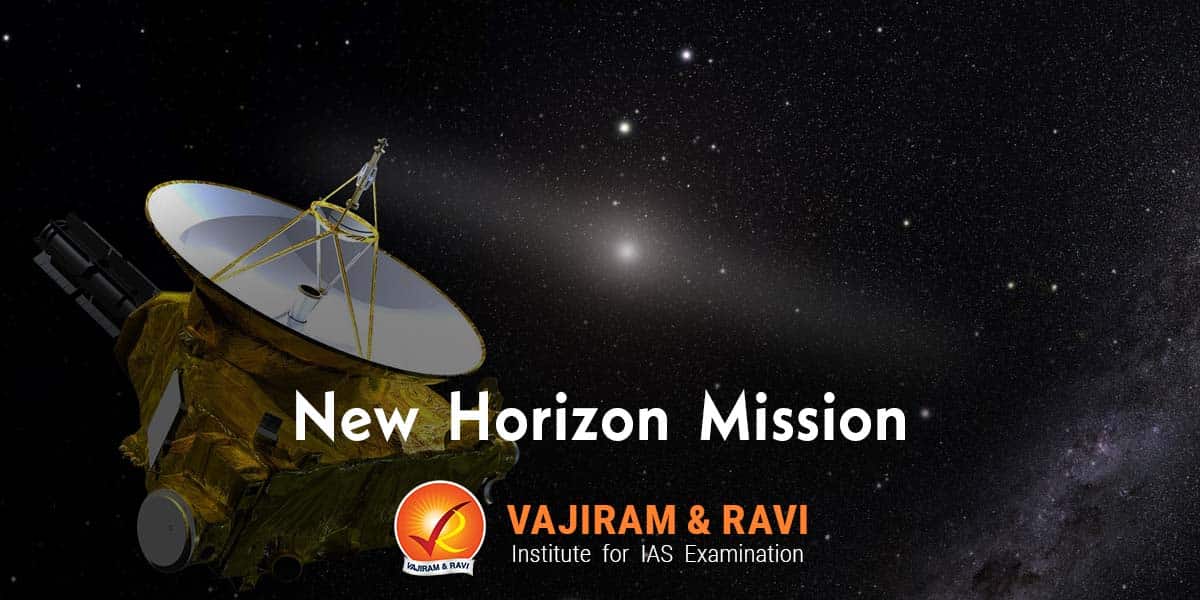The New Horizons mission, launched in 2006, stands as a groundbreaking endeavour in the field of space exploration. With its successful exploration of Jupiter, Pluto, and the Kuiper Belt, the spacecraft has been equipped with advanced instruments designed to study celestial objects in unprecedented detail. The New Horizons mission has played a pivotal role in expanding our understanding of the early solar system and reaching the outermost regions of the universe.
Continuing its journey, the New Horizons mission remains active, continuously providing valuable data on objects within the Kuiper Belt. Through its ongoing efforts, the mission contributes to our ongoing quest for knowledge about the cosmos and the mysteries it holds.
About New Horizons Mission
The New Horizons mission, NASA’s first venture in the New Frontiers programme, was launched in 2006. In 2015, it achieved a groundbreaking milestone by capturing the first close-up image of Pluto and its moons. The mission reshaped our understanding of distant celestial objects by expanding the boundaries of space exploration.
- Launch date: The mission was launched on January 19, 2006, from Cape Canaveral, Florida, on an Atlas V 551 launch vehicle.
- Mission design and management: The spacecraft weighs 478 kilogrammes and is powered by a radioisotope thermoelectric generator. The Johns Hopkins University Applied Physics Laboratory (APL) and NASA are in charge of managing it.
Objectives of New Horizons Mission
NASA’s New Horizons mission covers a wide range of objectives, seamlessly combining three groups of objectives to completely study Pluto, its moons, and the larger Kuiper Belt.
- Exploration of Pluto and its moons: To conduct a detailed study of the surface features, geological structures, and morphology of Pluto and its moons. This includes mapping the surface composition of Pluto and Charon.
- Atmospheric analysis of Pluto: To study the composition, structure, and features of Pluto’s atmosphere, focusing on studying its neutral components,escape rate, and interaction with the solar wind. This extends to searching for complex organic molecules like hydrocarbons and nitriles.
- High-resolution mapping: To create three-dimensional images of Pluto and Charon for a full study of their topographies. High-resolution mapping of specific areas, particularly the day/night boundaries, offers a closer look at surface compositions and textures.
- Studying Pluto’s neighbourhood: The mission explores the possibility of undiscovered natural satellites, ring systems, or magnetic fields around these celestial bodies.
Major Milestones of New Horizons Mission
The New Horizons mission has established key milestones in space research. On its journey, it visited the gas giant Jupiter. New Horizons has revealed a plethora of information about the geology, composition, and atmosphere of Pluto. After its visit to Pluto, the mission moved on to continue exploring objects in the distant reaches of our solar system, like the Kuiper belt.
Jupiter Flyby
During its flyby of Jupiter(2007), New Horizons used the planet’s gravity to significantly increase its speed, thereby shortening the journey to Pluto.
- Jupiter’s atmosphere: The spacecraft conducted detailed observations of Jupiter’s atmosphere, focusing on its storm systems and cloud composition.
- Study of ring system: It studied Jupiter’s ring system and its four largest moons, capturing detailed images and data.
Pluto and Its Moons
It provided the first-ever close-up views of Pluto in 2015, revealing a complex and varied surface.
- Geological features: The mission discovered vast ice plains, towering mountains, and deep valleys on Pluto, indicating an active geology.
- Atmosphere analysis: The spacecraft analysed Pluto’s thin, nitrogen-rich atmosphere, providing insights into its composition.
- Charon exploration: New Horizons revealed a diverse landscape on Charon, Pluto’s largest moon, including canyons and evidence of a past subsurface ocean.
- Moons’ study: The mission collected data on Pluto’s smaller moons, Styx, Nix, Kerberos, and Hydra, revealing their orbits and characteristics
Kuiper Belt Object Flyby
New Horizons conducted a flyby of Arrokoth, a Kuiper Belt object, in the year 2019.
- Images: The spacecraft provided clear images and data on Arrokoth, revealing its unique two-lobed shape and surface features.
- Insights into its formation: Flying around with Arrokoth revealed clues about the formation of planets and the early solar system, as it represents a well-preserved ancient planetary building block.
Current Status of New Horizons Project
The New Horizons project has been exploring the solar system for 17 years. The project is currently facing budgetary issues for 2024, with NASA considering cutting funding.
Despite budgetary challenges, New Horizons is in good health and will be able to continue its journey until at least 2050.
Significance of New Horizons Mission
The New Horizons mission is valuable in the fields of space exploration and planetary research. It gives astrophysicists a deep insight into the unknown space objectives in deep space. This has inspired other space organisations to take on deep space missions.
- The first detailed exploration of Pluto: Before this mission, Pluto was largely known only as a blurry dot from distant telescope images. New Horizons provided the first close-up images and comprehensive data on Pluto.
- Insights into the Kuiper Belt: By exploring the Kuiper Belt Object (KBO) Arrokoth, has given scientists a deeper look at a region of the solar system beyond Neptune that is filled with icy bodies and remnants from the solar system’s formation.
- Early solar system: The data collected from Pluto and Arrokoth are important for the study of early solar system processes and how planets and their moons evolve over billions of years.
- Technological marvel: The mission showed the feasibility and success of long-duration, deep-space exploration, showcasing advancements in spacecraft design, navigation, and communication over vast distances.
- Inspiration: New Horizons has captured public interest and imagination, playing a vital role in inspiring future generations of scientists, engineers, and space enthusiasts.
Last updated on April, 2025
→ UPSC Notification 2025 was released on 22nd January 2025.
→ The UPSC Vacancy 2025 were released 1129, out of which 979 were for UPSC CSE and remaining 150 are for UPSC IFoS.
→ UPSC Admit Card 2025 is expected to release in first week of May for CSE Prelims Exam 2025.
→ The UPSC Prelims 2025 is scheduled to be conducted on 25th May 2025 and UPSC Mains 2025 will be conducted on 22nd August 2025.
→ Apply once through it and aspirants can apply for various government exams conducted by UPSC.
→ The UPSC Selection Process is of 3 stages-Prelims, Mains and Interview.
→ UPSC Result 2024 is released with latest UPSC Marksheet 2024. Check Now!
→ UPSC Toppers List 2024 is released now. Shakti Dubey is UPSC AIR 1 2024 Topper.
→ Also check Best IAS Coaching in Delhi
New Horizons Mission FAQs
Q1. What is the New Horizons mission?+
Q2. When was the New Horizons mission launched?+
Q3. What were the primary objectives of the New Horizons mission?+
Q4. What were the findings from the exploration of Pluto and its moons?+
Q5. What is the current status and significance of the New Horizons mission?+
Tags: new horizons mission quest



















